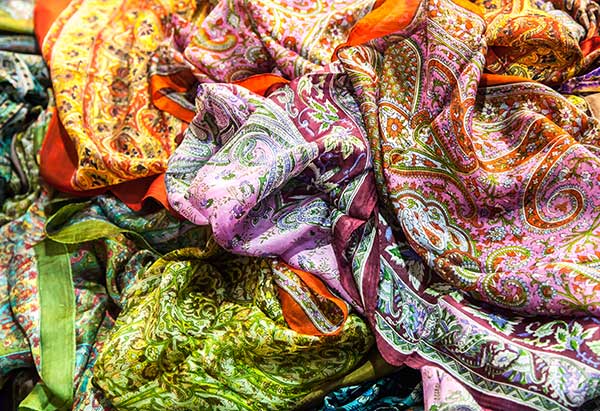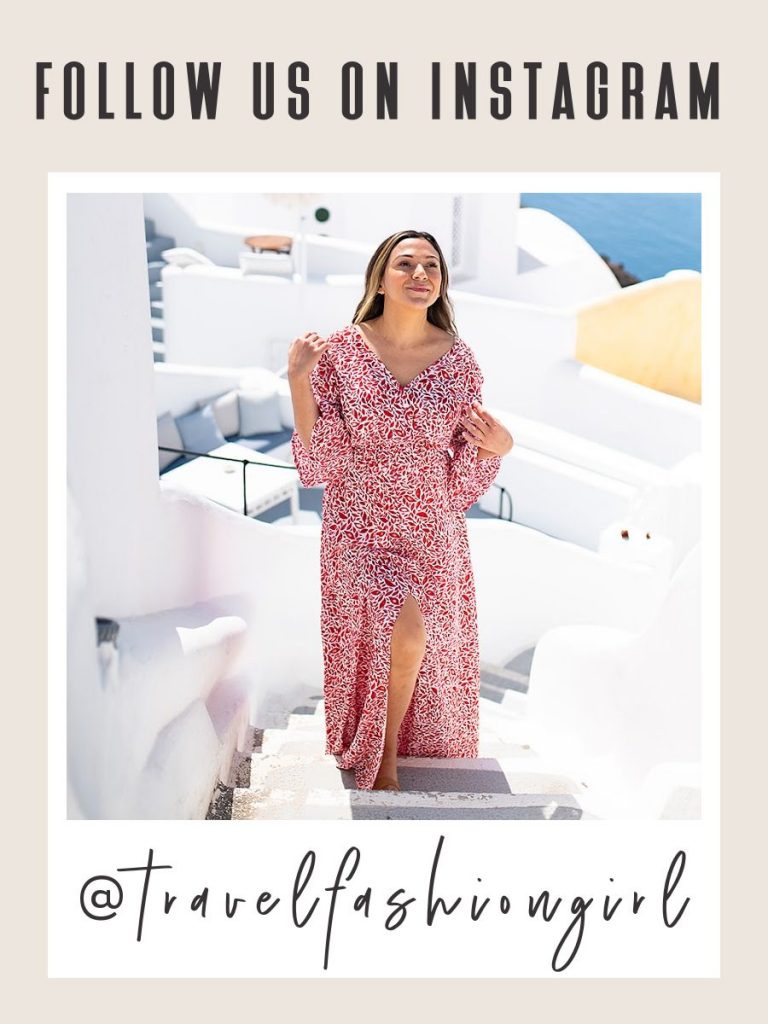Support TFG by using the links in our articles to shop. We receive a small commission (at no extra cost to you) so we can continue to create helpful free content. We earn from qualifying purchases made to the featured retailers. Thank you, we appreciate your support!
Laura Klein with Edgy June Cleaver shares her experience shopping in New Delhi – a fashionista dream! Read on to find out more about how Laura gets a custom made Salwaar Suit in India.
Shopping in New Delhi
by Laura Klein
I have always loved textiles, clothing, and fashion.
I can still remember how exciting it was to go to the fabric store and put patterns to fabric and plan the buttons or trim. I didn’t fully appreciate my mother’s expertise and the custom clothing she made for me until I was in my twenties. I miss going to the fabric store, finding the perfect pattern and creating a custom outfit I could call my own design. I also miss the perfect fit and expert craftsmanship of her creations.
Having clothing made to order just for your body is an expensive luxury in the US; reserved for wedding dresses and bridal party fashions. But in India, it’s very reasonable and having clothing made is standard for even middle class women. Loving fashion like I do, I knew I had to have at least one salwaar suit made. The key was limiting myself to one custom suit.
When I was making plans for India, I wasn’t sure if I could find a guide willing to do something like this with us but after a bit of research I chose The Delhi Way, a tour company specializing in custom New Delhi tours. The owners, Divya and Prianka were enthusiastic about this idea and hosted my partner and I on a fabric tour extravaganza and even helped us with the local tailor.

Our morning started at the Gandhi Nagar market area, a market area specializing in fabrics, embellishments, and ready-to-wear clothing. We were warned it could be a crush of people but we lucked out and were shopping on Eid, an Islamic holiday, so the crowds were on the manageable side. At first the market area didn’t look all that large, just an average sized market—a couple of streets lined with storefronts–but then I took a look down the long passages between the stores fronting the street and was agog: a multitude of tiny places to buy fabric, embellishments, and trims. How would I ever choose?
The bolts of fabric stacked along the walls of the shops were a fashionista’s dream. I could have spent a week selecting fabrics for kurtas, salwaar kameez suits, or anarkali churidar dupatta combinations. And that was just the beginning…
…it was necessary to choose trimming and embellishments…

My brain was already a whirl of vibrant blues electric pinks, shimmery silvers, iridescent whites and rich crimson. It felt impossible to choose one outfit from the stacks of fabric. Especially when you are someone who can’t even name their favorite color because she loves all of them! But it wasn’t exactly necessary to start from scratch for custom clothing and our guides led us into the stalls where fabrics were already placed in combinations, salwaar suits waiting to be measured and sewn. Perfect. Now all I had to decide was which one.
After much ado, I chose a beige and crimson combination while Karen went for a deep purple and teal suit. (each cost around $35 USD) The fabrics were lush raw dupioni style silk for the tops (Salwaars) and a lighter weight charmeuse silk for the churidars (the “lowers” or pants). All the suits needed were a tailor with a measuring tape. I loved the ease of not having to start from a few hundred bolts of fabric but having some design leverage, we chose necklines, sleeve lengths, and pant styles.
After we found our pretty suit combinations we wandered in the maze of stalls and shops to look over the borders and embellishments we could add to our ensembles. Both of us opted out on the extras but it was still fun to see the beautiful borders and embellishments, imagining the meters and meters of sequins trimming festival party wear or dressing up a simple kurta.
The next day we met Divya and Prianka in the Defence Colony to meet the tailor, Master G. He was a quiet and diminutive man and no doubt taken aback by my stature. (I wonder if he’s made a suit for a six-foot tall woman before?)

It was fun to sit in his living room and sketch out the suits, Master G took our measurements and between he, Divya and myself we came up with two lovely designs for our suits. I was so excited I wanted it right. that. minute. but we had to wait for ten days because we were taking a side trip out away form Delhi for a week. Had we been in Delhi the entire time, our suits would have been ready in a mere five days.
When we returned to Delhi, one of our first stops was Master G’s to pick up our suits and make any adjustments. I think I gasped with pleasure when he brought them out to us. Out of curiosity, I turned over a seam and was awed by the perfect stitching, the finish on the stitching and pattern matching so perfect Yves St. Laurent would have beamed with joy. He was indeed a master. It wasn’t a surprise our salwaars fit perfectly and the length of the pants exactly as we each requested. This priceless tailoring was a mere $65 USD for both suits.
And perfect for high tea at the Imperial Hotel on Diwali, don’t you think?
Thank you for sharing your awesome travel shopping story Laura! Don’t forget to check out her quirky and fun blog: Edgy June Cleaver










Hi Laura,
Would you be willing to post the name of the tailor/how we could contact him? It sounds like you had a great experience!
Next time you’re in Delhi try the sarojini nagar export market, where you can find an H&M dress for 300 rupees! The clothes are usually export surplus of brands like Zara, Mango etc. Also, the top is called kurta (salwar is another type of bottom that kurtas are worn with), and the tailor is master ji, wherein ji is a respectful form of address
Thanks for the tips!
Hi,
I am from Delhi and it’s great that you got a salwar kameez stitched there! Just want to point out that Master G is not the name of the tailor. We call all tailors Master ji (a master of their craft and we add the ‘ji’ as a sign of respect like ‘san’ is added in Japanese).